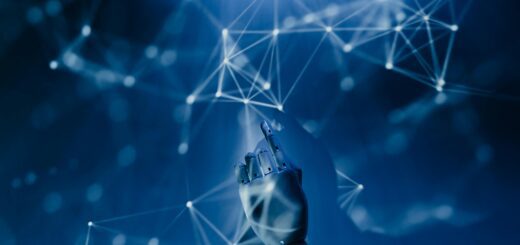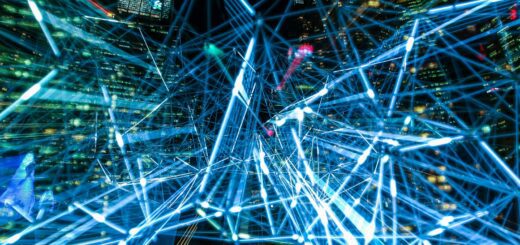AI Driven Cybersecurity- Protecting Against Emerging Threats

Introduction to AI Driven Cyberesecurity
As cyber threats grow in sophistication, traditional security measures are struggling to keep up. With the cyber criminals harnessing the power of AI to to create advanced malware and automated attacks, it is but inevitable that AI Driven Cybersecurity will have to be used to mitigate the threat emanating from the AI driven threats.
Anyone that has been a victim of a cyber attack, in any form, knows that traditional cybersecurity is just not sufficient to protect netizens from Cyber-criminals. And in the recent past, AI driven cybersecurity is emerging as a powerful solution, using artificial intelligence to detect, prevent, and respond to cyberattacks in real time. From phishing scams to ransomware attacks, AI enhances cybersecurity by analyzing vast datasets, identifying anomalies, and mitigating risks before they escalate. But how exactly does AI strengthen cybersecurity, and what challenges does it bring? This article explores the role of AI in defending against emerging cyber threats.
AI driven Cybersecurity: Revolutionizing Cybersecurity
AI’s ability to process large amounts of data, recognize patterns, and predict threats makes it an invaluable tool in cybersecurity.
1. AI-Powered Threat Detection and Prevention
- AI-driven systems analyze network traffic to detect unusual behavior.
- Machine learning algorithms identify new malware strains before they spread.
- AI enhances intrusion detection systems (IDS) and endpoint protection to safeguard networks.
2. Real-Time Fraud and Phishing Detection
- AI identifies phishing emails, fake websites, and fraudulent transactions in real time.
- Natural Language Processing (NLP) helps detect social engineering attacks by analyzing suspicious messages.
- AI reduces false positives, ensuring legitimate transactions aren’t blocked unnecessarily.
3. Automated Incident Response
- AI-powered Security Orchestration, Automation, and Response (SOAR) systems mitigate cyberattacks without human intervention.
- AI automates threat containment, isolating compromised systems before damage spreads.
- Machine learning refines response strategies by learning from past security incidents.
Key Applications of AI in Cybersecurity
AI driven Cybersecurity is transforming multiple areas of cybersecurity, improving efficiency and response times.
1. Network Security and Anomaly Detection
- AI continuously monitors networks, identifying and mitigating suspicious activity.
- Behavioral analytics detect deviations in user behavior, flagging potential insider threats.
- AI-powered Security Information and Event Management (SIEM) solutions provide real-time security insights.
2. AI in Cloud Security
- AI protects cloud environments by detecting unauthorized access and misconfigurations.
- Predictive analytics prevent data breaches and insider threats in cloud storage systems.
- AI-driven encryption enhances data security across multi-cloud environments.
3. Cyber Threat Intelligence and Predictive Defense
- AI scans the dark web for emerging cyber threats, providing proactive defense strategies.
- Threat intelligence platforms use AI to analyze attack patterns and predict future breaches.
- AI automates patch management, ensuring systems are updated against known vulnerabilities.
4. Identity and Access Management (IAM)
- AI-powered authentication systems use biometric verification, facial recognition, and behavioral analytics to enhance security.
- Adaptive authentication adjusts security levels based on risk assessment.
- AI prevents credential stuffing attacks, reducing unauthorized access.
Challenges and Ethical Considerations in AI Driven Cybersecurity
Despite its advantages, AI-driven cybersecurity presents several challenges that must be addressed.
1. AI-Powered Cyberattacks
- Cybercriminals are using AI to develop advanced malware and automated attacks.
- AI-powered deepfakes and phishing scams trick users with highly realistic content.
- Security teams must stay ahead by continuously updating AI defense models.
2. False Positives and Over-Reliance on AI
- AI security systems sometimes flag legitimate activities as threats, leading to operational disruptions.
- Human oversight is needed to validate AI-driven security alerts.
- AI should augment, not replace, human cybersecurity professionals.
3. Data Privacy and Ethical Concerns
- AI-driven security requires access to vast amounts of personal data, raising privacy concerns.
- Regulations like GDPR and CCPA enforce strict AI-driven cybersecurity data usage policies.
- AI models must be transparent and accountable, ensuring ethical use of user data.
The Future of AI in Cybersecurity
AI will continue to evolve, playing a critical role in protecting digital infrastructure from emerging threats. Future trends include:
- AI and Quantum Security: AI-powered cryptographic systems will enhance data security in a post-quantum world.
- Self-Learning AI Security Models: AI will improve its own defenses by learning from new attack methods.
- Autonomous Cybersecurity Agents: AI-driven bots will detect and neutralize threats without human intervention.
- Advanced Deepfake Detection: AI models will combat AI-generated misinformation and identity fraud.
If you enjoyed reading our take on AI driven Cybersecurity, please consider reading our take on the Latest AI trends and Innovations.
Conclusion
AI driven cybersecurity is reshaping how businesses and individuals protect sensitive data, providing faster, smarter, and more proactive security solutions. However, as AI strengthens cybersecurity, cybercriminals are also leveraging AI to develop more sophisticated threats. The future of cybersecurity will depend on human-AI collaboration, ethical AI development, and continuous adaptation to evolving threats.
Final Thought: Will AI-driven cybersecurity make the internet safer, or will cybercriminals find ways to outsmart AI defenses?



